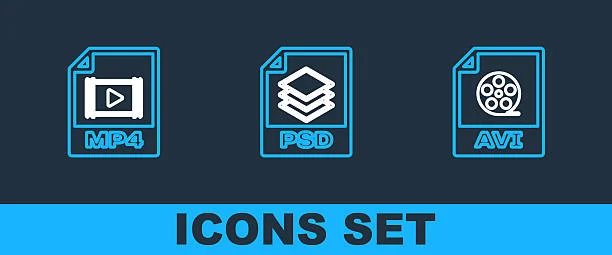Opening Scenario: Choosing the Right Format
Imagine you’ve just finished editing a video. You want to share it online, play it on your TV, or archive it on your computer. Suddenly, a question arises: should I save it as MP4 or AVI? Both formats are popular, but they have distinct characteristics that affect compatibility, quality, and file size.
Discover insights you’ll love—dive into our related posts for more inspiration!
Understanding the Basics
MP4 (MPEG-4 Part 14) is widely used for online videos, smartphones, and modern media players. It supports compression without significant loss of quality and can include subtitles, audio tracks, and metadata.
AVI (Audio Video Interleave), developed by Microsoft, is an older format. It offers high-quality video, especially in uncompressed form, but the file sizes are usually much larger than MP4. AVI is compatible with Windows devices but may require codecs or extra software to play smoothly on other platforms.
Comparing MP4 and AVI
File Size and Compression
MP4: Uses modern compression algorithms to reduce file size while maintaining good quality. Ideal for online sharing.
AVI: Less efficient compression, resulting in large files. Suitable for archival purposes or professional editing.
Compatibility
MP4: Works on almost every device, from smartphones and tablets to web browsers and smart TVs
AVI: Best suited for Windows environments; may face playback issues on macOS, Linux, or mobile devices.
Quality and Editing
MP4: Excellent for standard viewing; good balance between quality and size.
AVI: Supports uncompressed video, making it perfect for high-quality editing workflows.
Use Cases
MP4: Uploading to YouTube, social media, embedding in presentations, or sending via email.
AVI: Archiving master copies, professional video production, or situations where maintaining maximum quality is crucial.
How to Convert Between Formats
Sometimes you start with one format and need the other. For example, converting AVI to MP4 for easier sharing. Online platforms like Ahaconvert provide a straightforward solution for format conversion. They also offer specialized tools like an mp4 converter to handle the process efficiently, keeping quality intact.
User Tip
Always consider your final destination. If the video is for the web, MP4 is almost always preferable.
Use AVI if your priority is high-quality editing or archival purposes.
When using converters, select settings that preserve resolution and frame rate to avoid quality loss.
Conclusion
There isn’t a one-size-fits-all answer. MP4 excels in compatibility and file efficiency, making it the better choice for everyday use. AVI shines in scenarios demanding maximum quality. Understanding the strengths of each format and choosing based on your needs will save time and ensure your videos perform optimally across devices.
Unlock more ideas and tips! Explore our handpicked content tailored for you.

